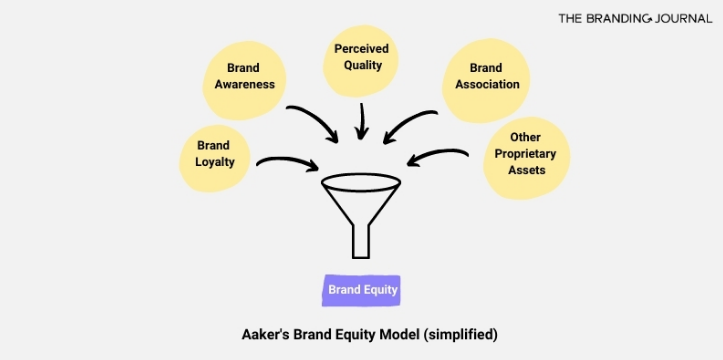How To Build Trust To Grow Your Brand Authority | Ep. 37 iDigress Podcast

Trust is pandemic proof. It’s whatever-is-coming-next proof.
It means people will stick with you during the hard times because they trust you to provide for them. Trust between a company and its audience, customers, or clients is foundational for just about every single business function.
Just think: why should people buy from or listen to you? The market is a competitive place with thousands of other brands trying to do what you are. So, what sets you apart? Trust does. Trust from your audience and customer base that you are going to provide them with what they need, when they need it, and in a way that they are happy with.
Trust is the foundation of brand equity which is what people think about your company and brand. It’s what keeps them coming back and advocating for you. Trust, as demonstrated through brand equity, creates loyalty, which in turn builds a scalable and sustainable business.
On Episode 37 of my podcast, iDigress, we talk about how to build trust currency, why it matters, and how you can use it to increase your brand equity and maximize your business growth potential. Be sure to listen to this episode and others at iDigress.fm.
“The key thing I want you to think about: does your consumer, does your customer, does your client, does your audience, does your community trust you? Do they trust in your mission? Do they trust in your purpose? Do they trust in your product, service, or offering? … Do they trust you? And if you don’t know that answer, that’s a problem. If you don’t know if the people you are trying to attract trust you, that is a legitimate problem in your business, branding, and marketing. It impacts your sales funnel and everything in between, down to your bottom line.”
— Troy Sandidge, iDigress Podcast | Ep. 37
WHY TRUST MATTERS FOR BRAND EQUITY
Most people are pretty comfortable with the idea that trust is important in a relationship. We value trust in our friendships, romantic relationships, and between colleagues. But the relationship between a company and its customer base is equally important to create and sustain trust.
Trust in a business-customer relationship is the mutual understanding that the business is going to consistently deliver what they say they will to the customer, and the customer will provide feedback to the business on what they want. Trust is a two-way relationship that should ultimately lead to happy customers and businesses.
Each business owner needs to ask themselves three questions:
- Do I trust myself and my product, service or offering?
- Does my customer (or audience, client, etc.) trust me?
- How can I amplify this trust and make it consistent in order to achieve business goals and growth?
Take some time to reflect on these questions and see where you land. If you don’t have answers to those questions, you’ve got an identity problem. This is not just a marketing issue, it’s one of not understanding the core of your identity as a brand and business.
Without the foundational level of trust, there can be no brand identity. And without brand identity, there is no brand equity—the power and influence of your brand to increase sales and impact.

Trust equals customer buy-in to your brand. This builds brand equity. And brand equity matters because it opens up possibilities for your business growth. Here are some benefits to developing your branding:
- You can develop greater market share.
- You can charge a premium price for your products or services.
- You can extend your product line easily.
- You can have a greater impact as a company.
Trust is the foundation. It creates loyal customers who provide a sustainable basis for your company’s operations. Furthermore, trust in your brand and company is essential to creating brand equity, which can be leveraged to achieve your business potential.
BUILDING & MEASURING BRAND EQUITY
Brand equity is built on trust between the customer and business, which is foundational for any success. Branding can help your business grow through increased market share, premium pricing, and other strategies mentioned above. To better understand brand equity, let’s look at the three components:
- Brand Perception: What customers believe the brand or business represents, not what the company says about itself. This is related to either brand recognition (consumers are familiar with your logo) or brand awareness (consumers know what you do). It’s important that the customers brand perception is aligned with the company’s — a misalignment of brand perception means missing out on growth opportunities by not giving the customer what they want.
- Positive and Negative Effects: Customers will perceive a brand a specific way as they interact with the product or service. Their reaction to a brand can be based on factors such as customer experience, quality, or their own preferences. Customer reactions will lead them to either positively or negatively engage with the brand.
- Resulting Positive and Negative Value: The effects of positive and negative brand perception will manifest in tangible value, such as sales and increased revenue, or intangible value, or how it makes people feel
There are other ways of looking at branding as well. David Aaker, a former professor at the University of California, Berkeley, popularized the Aaker Brand Equity Model in the 1990s. In it, he identified five components of brand equity, which are brand loyalty, brand awareness, perceived quality, brand association, and proprietary assets. When each of these aspects of branding is aligned with what the customer needs and wants, trust is built in the business-customer relationship.

Another popular model to understand is Kevin Lane Keller’s Brand Equity Model (pictured below). This model views brand equity as a pyramid:
- The foundation is identity through brand salience and awareness — who are you as a company and brand?
- Next is the meaning, determine through brand performance and imagery — what are you, as a company and what do you offer?
- After those have been determined, the model moves to response through consumer judgements and feelings — what about you (the company)?
- Finally, it moves to resonance — what about you (the company) and me (the consumer)? This determines whether or not they will buy from you or engage with the brand.

These models are effective for business owners and leaders to understand where they currently are as a brand in terms of brand equity. It also helps you understand the customer’s journey from brand awareness—they’ve heard about you—to actually purchasing from you and establishing themselves as a loyal customer.
Each aspect of brand equity has to do with increasing trust in the business-customer relationships. The trust is built through the consistency with which each aspect of the brand aligns with their own needs, wants, and expectations from the brand.
To give a few examples, let’s look at an aspect from each model. Aaker’s model highlights perceived quality as an aspect of brand equity. Imagine a company that positions itself as a high-end company with quality products. If a customer then buys that product but is unhappy and perceives the quality to be low, trust is broken and the customer is unlikely to buy again.
Another example is in Keller’s model, which highlights brand imagery as part of tier two: meaning. Imagery can refer to logos or marketing and advertising efforts. So, if a customer sees some excellent advertising for the product but receives something different when they go to purchase, trust is, again, broken because the meaning is misaligned between the imagery and reality.
From these brief examples, we can see how trust is foundational to building brand equity, which in turn has a number of benefits to the business’ growth and development.
Brady Equity For Business Growth
As a business owner or leader, you want to understand these components of brand equity in order to build and improve on them. Many companies operate on the basis of KPIs (Key Process Indicators) to measure progress and see where there are still areas of improvement.
When it comes to brand equity, there are three ways to measure it:
- Financial metrics such as profitability, revenue, growth rates, or the cost to acquire or retain customers.
- Strength metrics such retention, brand loyalty, social buzz or mentions
- Consumer metrics such as brand relevance, emotional connection, and brand perception.
Each company will have different KPIs to measure these things, but it’s important to spend some time developing metrics to measure progress and growth. Some measurements, especially within the financial metric category, are relatively easy to measure. Others, such as brand perception and emotional connection will have to be collected through creative means such as feedback surveys or focus groups.
Conclusion & Final Thoughts
Brand equity cannot be ignored. It’s a core piece of the puzzle, working alongside marketing and sales to achieve business growth and success. Brand equity is built on trust between the customer and the company, a foundation that results in loyal customers who advocate for your business. Trust and strong brand equity have the potential to launch your business into new levels by increasing market share, charging premium prices, extending product lines, and having a bigger impact as a company and brand.
If you’re looking for practical tips and real-talk about marketing, branding, and building your business, make sure you check out the full episode of the iDigress podcast where we discuss building trust equity. Don’t forget you can connect with me @FindTroy on all major social media platforms.
Listen to iDigress: Episode 37 below:
If you enjoyed this episode and it gave you some food for thought or made an impact in your business, I would love and appreciate if you would share your thoughts in a review and rate the podcast. In addition, you can tweet about it tagging me @FindTroy and the iDigress Podcast @iDigressfm.
